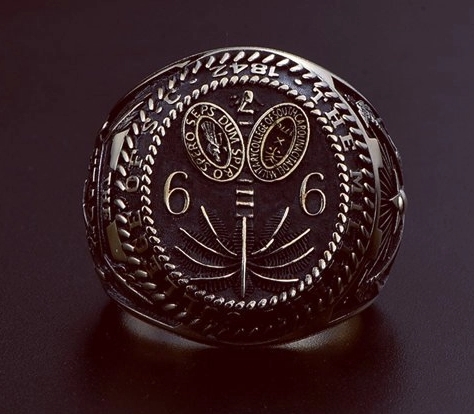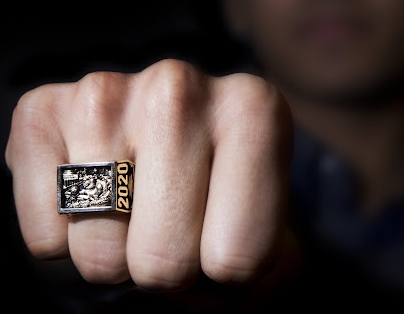Ultrium Stainless Steel is made from a proprietary composition that includes copper in its alloy. Unlike ordinary stainless steel, which is frozen, Ultrium is heat-treated to form a protective molecular structure resisting corrosion and producing a brilliantly shiny finish. So does ultrium rust?
Yes, Ultrium is prone to rust. Not only is it more likely than comparable steels to rust in wet environments, but once it starts, it spreads rapidly, and since the exterior layer of the steel is composed of high carbon steel, the rust takes on a reddish color.
Of the truth, Ultrium is the most substantial standard stainless steel globally. Its renowned strength and durability are ideal for everyday use in items that require a long-lasting material that can stand up to hefty wear.
Yet, it can get rust over the year, and that is why you need to do all it takes to prevent rust and protect it for a more extended period.
Contents
Can Ultrium Rust?
Judging by the fact that Ultrium is a stainless steel metal, it can rust. Items made or composed of Ultrium can give in to rust under certain (extreme) conditions.

However, it would take a lot for this to happen. The reason is that Ultrium is composed of a rich amount of chromium. This is the property that makes it highly resistant to corrosive states. The presence of chromium will protect the Ultrium item from giving in to rust and other corrosive states.
You should also know that Nickel – which is a primary component of Ultrium; is a metal that hardly gives in to rust. So, these two factors are reasons why Ultrium is a go-to option for people that need base metals that are highly resistant to corrosive states such as rust and tarnish.
This is why some pieces of jewelry are now made using Ultrium instead of some other elements. For instance, Ultrium jewelry stands a better chance of offering durability than white gold and silver items.
In addition to this, Ultrium turns out to be a cheaper and more accessible metal for jewelry makers. This is even though it offers a good look similar to valuable metals like platinum and gold.
What Can Make Ultrium Rust?
Rust is the visible presence of a natural coating that sets in on items that contain iron when these items experience oxidation. However slim the chances are, stainless steels such as Ultrium can experience rust as this is caused by several factors.

Such factors include exposure to high humidity, being in surroundings that have high salinity, exposure to mechanical abrasions, chloride, certain kinds of cleaners, and moisture. If you intend to keep your Ultrium items from rusting, you should watch out for all these things. Make sure your items made of this special stainless steel metal are not exposed to these conditions.
How To Restore Ultrium That Is Rusting?
We have established that Ultrium can give in to rust despite its rich amount of nickel and chromium that makes it highly resistant to this corrosive process. If you have such a situation and need to restore your Ultrium-made materials, there are some options you can consider.

1. Rust Converter
The manufacturing industry is well aware of the possibility of metal rusting and the need to offer solutions. This is why there are products known as rust converters.
More often than not, these chemicals are in liquid form. They need to be applied to the rusty item using a roller or brush and left for a while. After the chemical properties of the rust converter have kicked in, then sandpaper or an item with an abrasive surface can be used to scrub the item.
Judging from experience, it is an easier way to go about eliminating rust. However, using a rust converter works best when it is a mild situation. So you might want to consider a more effective approach if the situation is not mild.
2. Chemical Solutions
Tons of chemical solutions can be purchased and used to eliminate rust. Many of them have been proven to be very effective but best when dealing with small items.

Other than this, you should be very particular about your safety when using these chemicals. This is why you should wear a nose mask and use hand gloves.
After applying the chemical solution, you should use something with an abrasive surface to scrub the rust coating off. Options include a screwdriver, electric sander, steel wool, and sandpaper.
3. DIY Solutions
There are simple techniques that can be engaged using some ingredients you might even have readily available. All of the DIY options require that you use abrasive items to scrub the rust coat off the item eventually. Some of the DIY options include the use of:
- Water and Baking Soda: You should pour baking soda generously into a bowl. Then apply just enough water to make it look like a paste solution. After mixing both water and baking soda, you should apply it to the item.
- Lime and Salt: You can apply salt on the surface of the item and pour some lime afterward. The synergistic interaction of the salt and lime properties will do a lot to peel off the rust coating.
- Vinegar: Soaking the item in vinegar for some time should also do the magic. This is best for small items as the item has to be submerged in vinegar.
Conclusion
As with other kinds of stainless steel, Ultrium is capable of rusting. This is even though it contains a rich amount of chromium and Nickel that makes it highly resistant to this corrosive state. If you need to prevent your Ultrium item from rusting or restoring it from this state, you also have details that would help you do this here.

